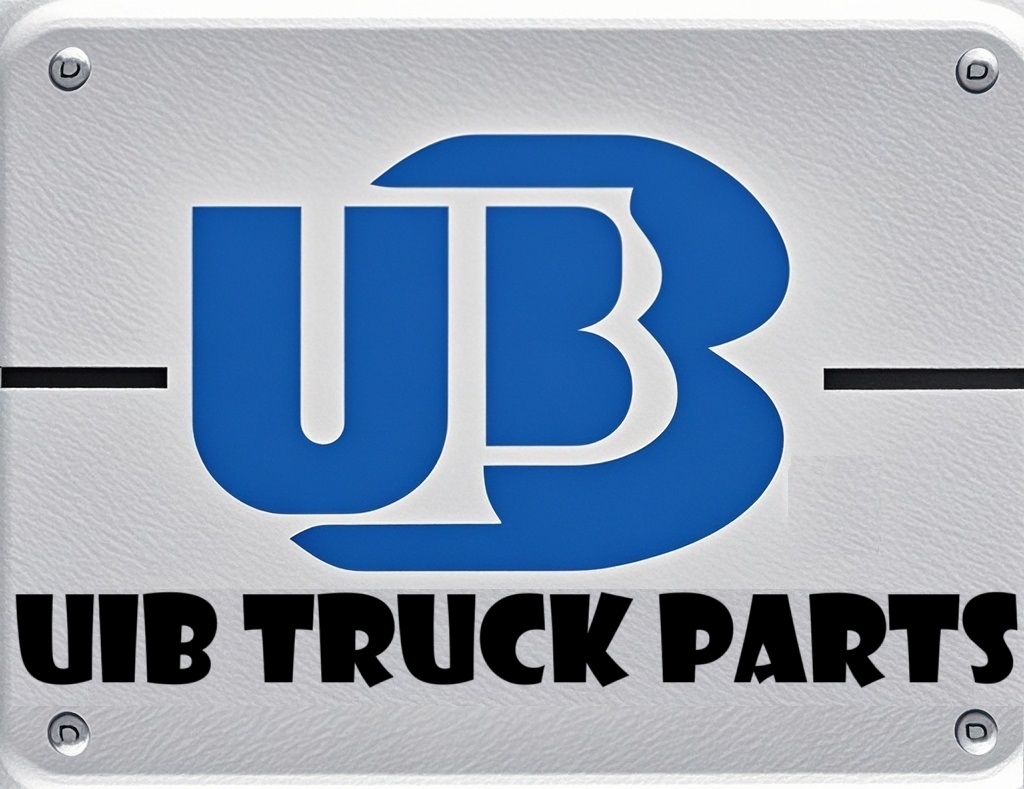About Us
What to Do If a Truck Suddenly Decelerates Ahead and Your Car's Brakes Fail on the Highway? This Could Save Your Life
Views : 222
Update time : 2025-07-28 14:29:07
When driving on the highway, if the vehicle in front of a truck suddenly decelerates and your own car's brakes happen to fail, it is undoubtedly an extremely dangerous situation. At this time, the correct response may be related to life safety. The following are the specific handling steps and graphic explanations.
Step 1: Stay calm and don't panic
When encountering such an emergency, the first thing a driver should do is stay calm and avoid making wrong operations due to panic. Panic may lead to more dangerous behaviors such as loss of control of the steering wheel and accidental stepping on the accelerator. At this time, you should hold the steering wheel tightly with both hands to stabilize the direction of the vehicle, laying the foundation for subsequent operations.

(In the picture, the driver holds the steering wheel steadily with both hands, looking focused, showing a state of calm response)
Step 2: Immediately turn on the hazard warning flashers
Quickly turn on the hazard warning flashers (double flash lights) to send warning signals to surrounding vehicles, inform other vehicles that there is an abnormal situation with your vehicle, and remind them to avoid it to reduce the risk of collision.

(The double flash lights of the vehicle in the picture are flashing, clearly conveying warning information to the surrounding)
Step 3: Observe the surrounding environment and find a safe haven
While keeping the vehicle stable, quickly observe the rearview mirrors and side conditions on both sides of the vehicle to check if there is an emergency lane, an open area, or a lane with less traffic. If the emergency lane is free of obstacles and wide enough, you can try to change lanes to the emergency lane; if the vehicles in the adjacent lane are far away, you can also slowly change lanes under the premise of ensuring safety. Note that when changing lanes, you must turn on the turn signal in the corresponding direction in advance, observe the rearview mirror with your peripheral vision, and only operate after confirming safety. Do not force a lane change.
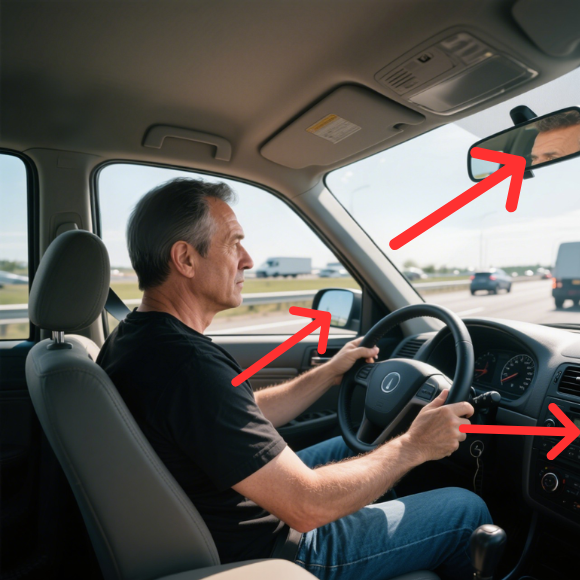
(The arrows in the picture indicate the directions the driver should observe, pointing to the rearview mirrors on both sides and the side, showing the action of observing the surrounding environment)
Step 4: Use engine braking to slow down
For manual transmission vehicles, you can quickly downshift step by step to reduce the speed through the traction of the engine. For example, quickly switch from a high gear to a low gear, and use the resistance generated by gear transmission to slow down the vehicle. For automatic transmission vehicles with a manual mode, you can switch to manual mode for downshifting; if there is no manual mode, you can try to shift into "L" gear (low gear) or "2" and "1" gears, and also use engine braking to slow down.
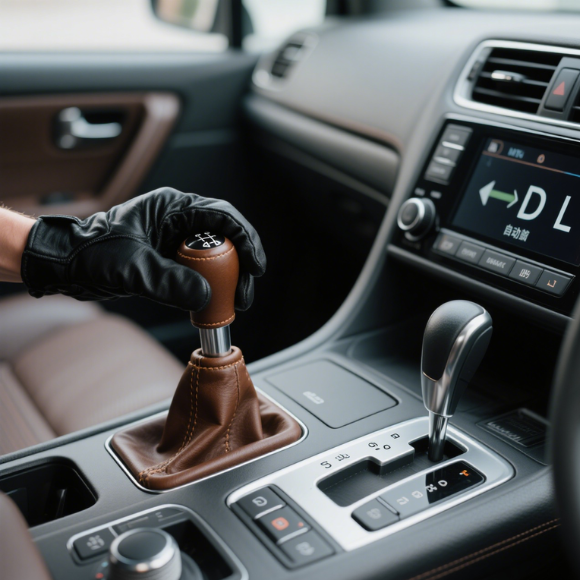
(The picture shows the process of the shift lever of a manual transmission vehicle switching from a high gear to a low gear, and the logo of an automatic transmission vehicle switching to a low gear)
Step 5: Reasonably use obstacles to slow down
If the above methods are not effective and there are suitable obstacles around, you can gently turn the steering wheel to make the side of the vehicle slowly rub against road guardrails, isolation piers and other obstacles under the premise of ensuring that it will not cause a serious collision, and use friction to slow down the vehicle. But pay attention to the strength to avoid loss of control of the vehicle due to violent collision.
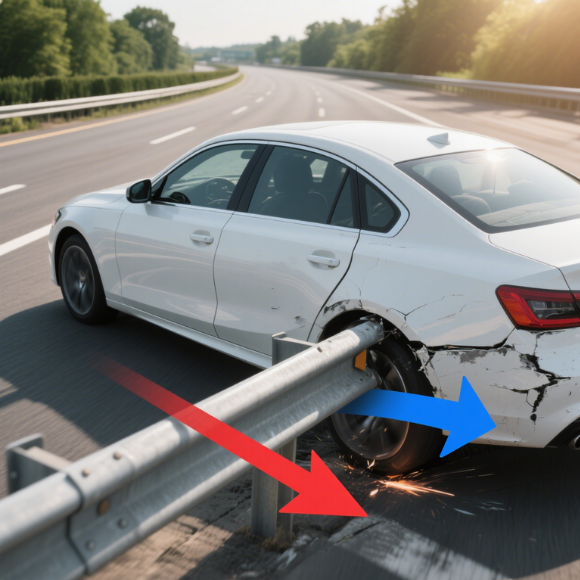
(The side of the vehicle in the picture is slightly in contact with the guardrail, slowing down gradually through friction. The arrows indicate the direction of the vehicle's movement and the resistance generated by friction)
Step 6: Do not directly rear-end the vehicle in front
Throughout the process, try to avoid directly rear-ending the suddenly decelerating vehicle and the truck in front. Because a rear-end collision at high speed has a huge impact, which is very likely to cause serious consequences of car crashes and fatalities. Always take finding a safe way to slow down and avoid danger as the primary goal.
In short, when encountering such emergencies on the highway, staying calm, making correct judgments and taking decisive actions are the key. At the same time, regular inspection and maintenance of the vehicle, especially the brake system, can effectively reduce the occurrence of such dangerous situations.
Related News
 Revealing Three Little-Known Facts About Trucks
Revealing Three Little-Known Facts About Trucks
Aug 06,2025
This article presents three little-known facts about trucks, including that the cab can be flipped for engine maintenance, the rearview mirrors are equipped with defrosting and deicing functions, and the small tank next to the fuel tank is an urea tank which is crucial for environmental protection. It helps readers understand the secrets behind truck designs and functions.
 Control Valve: The "Key Steward" in Truck Engines
Control Valve: The "Key Steward" in Truck Engines
Aug 05,2025
This article introduces the role of the control valve in the diesel pump, including controlling fuel quantity and stabilizing pressure; lists symptoms when it malfunctions, such as weakened power and increased fuel consumption; provides maintenance methods, and illustrates through cases that paying attention to the control valve can avoid unnecessary expenses.
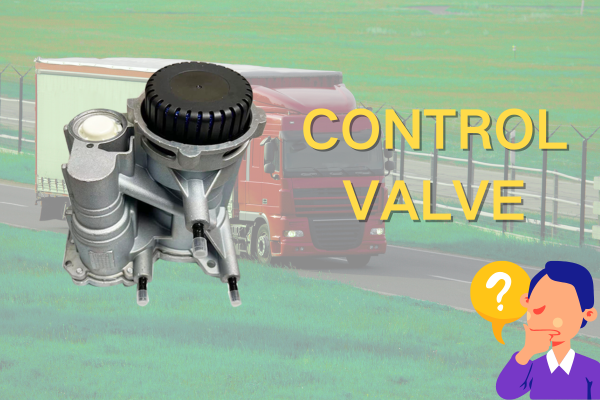 Control Valve: The "Invisible Commander" of Truck Power
Control Valve: The "Invisible Commander" of Truck Power
Aug 05,2025
The control valve is an indispensable core regulating component in the truck power system. Although it hides inside the machinery and keeps a low profile, it relies on its powerful functions to precisely command the rhythm of power output, comprehensively ensure driving safety, and intelligently adapt to various working conditions. With sophisticated design techniques and durable material selection, it can achieve a perfect balance between power and efficiency in various complex scenarios, and can be called the invisible cornerstone supporting the efficient and stable operation of trucks.
 Truck Snow Chains: Safety Guarantee on Icy and Snowy Roads
Truck Snow Chains: Safety Guarantee on Icy and Snowy Roads
Jul 28,2025
This article elaborates on truck snow chains, including their important role on icy and snowy roads, applicable scenarios, selection methods, installation steps, and usage precautions. It aims to provide references for truck drivers to drive safely in icy and snowy weather and reduce accidents caused by slippery roads.
